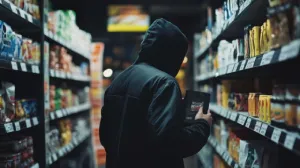Why SCRs are Critical During Terrorist Incidents
The Nerve Centre in a Crisis
When a terrorist incident unfolds, the Security Control Room (SCR) is not just a workplace, it becomes the command centre that holds everything together. While officers on the ground might be dealing with screaming crowds, alarms, or visible threats, you have the advantage of perspective. You can see more, hear more, and coordinate more.

Think of it like air traffic control: without the control tower, pilots would be flying blind. In the same way, without the SCR, a terrorist incident would descend into chaos. With the SCR, you bring order, coordination, and direction, all within seconds.
Tip: Always remind yourself that you are the “big picture”. If ground staff are reacting emotionally, your role is to be the calm eye of the storm.
Real-World Example
During the 2007 Glasgow Airport attack, attackers attempted to drive a burning vehicle into the terminal. While the public and staff reacted in panic, the control room triggered lockdown protocols, redirected passenger flows, and coordinated with police. Their immediate action stopped attackers from reaching crowded spaces inside the terminal.
Compare this to incidents where control room operators froze, delayed, or failed to follow procedure, the result was confusion, late evacuations, and in some cases, unnecessary injuries.
Tip: Your speed matters. A five-second delay in making a call or locking a door can be the difference between a safe evacuation and casualties.
The SCR Advantage in Terrorist Situations
SCR operators bring unique strengths that no one else on site can replicate:
Situational Awareness: CCTV allows you to spot suspicious behaviour, track attackers, or identify hazards that ground staff may miss.
Command Through Communication: Your announcements and radio calls set the tone. Clear words = calm crowd. Confusing words = chaos.
Access Control: You control barriers, doors, and gates. Used correctly, you can protect safe zones and keep attackers out. Used wrongly, you can trap people or block escape routes.
Evidence Collection: Every action you log, every camera you save, becomes crucial for investigations and legal cases afterwards.
Example: In a city centre ramming attack, SCR operators used street cameras to track the attacker’s vehicle after the first impact. Their live updates gave police the edge in closing roads and preventing a second strike.
Managing the First Five Minutes
Terrorist incidents are often brutal, short, and high-impact. Research shows most attacks are over in 15 minutes or less, which means the first five minutes are everything.
Spot and Confirm: Use CCTV to locate the threat, confirm what type it is (vehicle, knife, firearm, explosives), and identify danger zones.
Alert and Share: Call emergency services with accurate details, not speculation. Police need facts: numbers, weapons, locations.
Direct and Support: Guide ground staff with calm instructions. Their focus is survival, but your role is strategy.
Example: In one London Underground incident, an operator noticed smoke on CCTV and ordered an immediate evacuation before staff even smelled it on the platform. Dozens of injuries were prevented.
Tip: Practise “priority thinking” during drills, ask yourself, “If I had only 60 seconds, what information is most vital to share right now?”
Working With Emergency Responders
When police or fire arrive, they are already under extreme pressure. They rely on you for clarity, accuracy, and guidance. Poor communication wastes their time; clear, fast reporting saves lives.
What you should provide immediately:
Exact location of the threat (building, floor, entrance),
Number of suspects or attackers seen,
Description of weapons (gun, knife, vehicle, suspicious package),
Crowd behaviour (panic, trapped groups, bottlenecks),
Safe access routes and hazards to avoid.
Example: During a vehicle ramming in a pedestrian zone, the SCR relayed attacker movements street-by-street to police dispatchers. Officers were able to intercept within minutes because the control room gave pinpoint details.
Tip: Never exaggerate or guess. “One male, possibly armed, moving north” is better than “They’re everywhere with guns!” Clarity helps, panic confuses.
Human Behaviour Under Attack
In any terrorist incident, human psychology plays a massive role. Crowds panic, people freeze, rumours spread like fire. The SCR can either calm the situation or add to the chaos.
Your job:
Guide crowds with clear announcements like, “Walk calmly to Exit A, staff will guide you.”
Support staff by giving them short, direct instructions they can follow under pressure.
Stay calm even when radios are screaming. If your voice trembles, panic will spread.
Example: At a sports stadium evacuation, thousands of fans started to rush towards one blocked gate. The SCR operator redirected them with clear, repeated announcements to alternative exits. What could have been a crush turned into an orderly dispersal.
Tip: Train your voice tone. A calm, authoritative message reassures people even in extreme fear. Panic in your voice creates panic in theirs.
Key Considerations for SCR Operators During Terrorist Incidents
Time is your greatest enemy, every second matters: In most UK terrorist incidents, critical events are over within 15 minutes. If you hesitate, you lose control. Act fast, act smart, and never delay key decisions.
Communication must be clear, simple, and professional: Fancy words or panicked radio chatter confuse people. One steady instruction such as, “Evacuate through Exit A now,” can save hundreds of lives.
Know your site inside out: You should be able to point to evacuation routes, muster points, and secure areas without checking a plan. When chaos erupts, there’s no time to flip through manuals, your knowledge must be instant.
Always log actions: Every lockdown, every call, every instruction must be recorded. Those notes are not just paperwork, they are evidence. After an attack, your log could be reviewed by police, courts, or even a public inquiry.
Rehearsals and drills turn nerves into instinct: In high-pressure moments, you won’t suddenly become heroic, you’ll fall back on your training. Practise often, because muscle memory will carry you when adrenaline takes over.
Your calmness spreads, and confidence is contagious in crisis: People mirror your behaviour. If you sound steady, the staff and the public will steady themselves. If your voice shakes, fear will ripple across the site.
Tip: During training, practise giving instructions in a loud, clear, calm voice. Record yourself if needed. You may be surprised how much tone, pace, and clarity affect how others respond.
Did You Know?
The UK Home Office found that 73% of terrorist attacks end within 15 minutes, meaning most of the outcome is decided before emergency services can arrive. That’s why your role as an SCR operator is often the first and most decisive line of defence.

